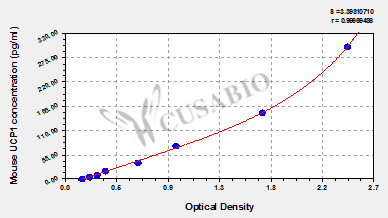Please provide the following information regardingMouse Mitochondrial brown fat uncoupling protein 1, UCP1 ELISA Kit (CSB-EL025554MO)
2) Is the capture antibody a monoclonal or polyclonal?
3) What is the host of the capture antibody?
4) What’s the immunogen or immunogen range of the capture antibody?
5) What’s is the species of the immunogen of the capture antibody, human or something else?
6) Is the detection antibody a monoclonal or polyclonal?
7) What is the host of the detection antibody?
8) What is the immunogen or immunogen range of the detection antibody?
9) What is the species of the immunogen of the detection antibody? Human or something else?
10) What’s is that standard? A recombinant protein or something else? If a recombinant protein, what is the host?
11) If recombinant protein, is it full length or partial?
12) What is the species of the standard– human or something else?






